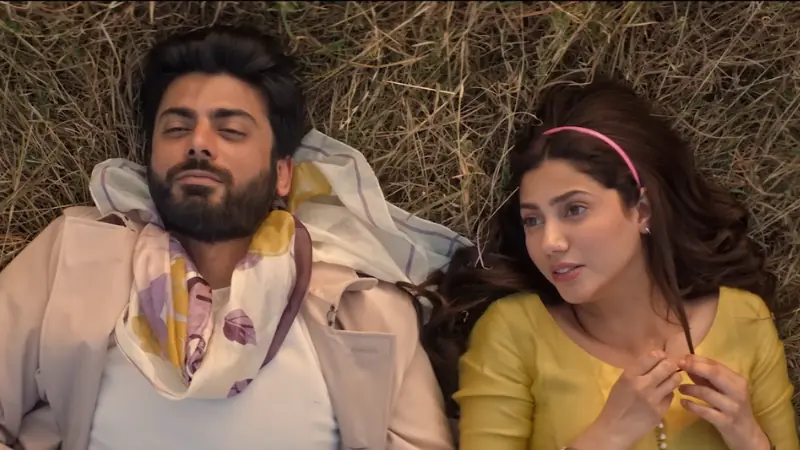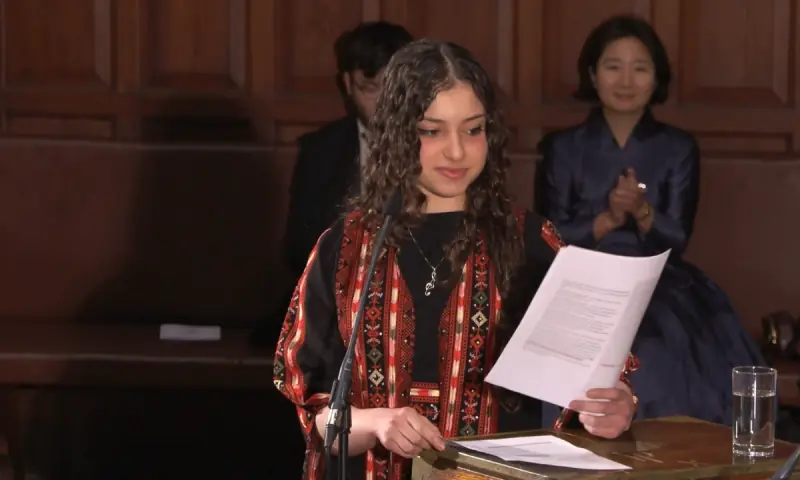Review: Gurrya Ka Ghar is an unfaithful adaptation with a chip on its shoulder
I recently had the chance to watch Tehrik-e-Niswan’s Gurrya Ka Ghar (A Doll’s House) at the Arts Council of Pakistan, Karachi, part of the World Culture Festival 2024. As someone familiar with Henrik Ibsen’s play, A Doll’s House, which inspired this performance, I went in with a critical eye, curious about how the adaptation would unfold in a local context. My husband who hadn’t read the original also came along, which made it interesting since it allowed me to experience the story from two different perspectives. While I analysed the adaptation, he enjoyed it with a fresh mind, and that contrast added something special to the whole experience.
Directed by Anwer Jafri, the play revolves around a woman named Tehmina (played by Naina Black), living in a restrictive marriage with her husband Murad. She initially appears happy, but over time, she realises that her role in the marriage is like that of a doll — controlled and belittled by her husband. When a secret from her past threatens to be revealed, she begins to question her life and independence. In the end, she decides to leave her husband and children to find herself, symbolising her desire for freedom and self-discovery.
It sounded good on paper, but the reality wasn’t as great.
The good
Experimental approach

The adaptation took an experimental route by presenting the play at almost a meta level. It started off like a rehearsal, with the actors’ spots marked on stage and characters chatting about their entrances while stagehands handed them props. While this was an interesting idea, it could have been smoother with better interactions from the stagehands. The props could have been more symbolic, representing the characters’ emotional struggles and adding depth to the rehearsal concept.
Another cool idea could be having the actors turn the pages of their scripts during the performance. As they do, the pages could become torn, stained, or altered, reflecting the characters’ journeys and how their choices shape their identities.
This concept had much more potential and could have been expanded to add a unique dynamic to the play.
Nuanced take on class differences

One of the standout moments in the play was a powerful interaction between Sheema Kermani’s character Sakina and the female lead. In this scene, a wealthy woman shares her complaints with a poorer woman, leading to a thought-provoking chat about their different lives.
What made it really special was how it highlighted class differences, especially when Sakina talked about the difficulties of getting healthcare and basic necessities for the poor in Pakistan compared to the rich. This conversation gave us a real look at the struggles women from various backgrounds face, showing the harsh realities of inequality in accessing essential services. It was a strong reminder that, no matter their circumstances, women often fight similar battles for dignity and respect.
The bad
Lack of immersion

Let’s put aside the fact that it was an adaptation and focus just on how it was performed on stage. Even then, the play struggled to create the kind of immersive experience you’d expect. The atmosphere fell flat, and there was no real depth that would help me connect emotionally with the story.
Key moments, such as the romantic scenes between Tehmina and Murad (Paras Masroor), their arguments, the altercation between Saleem (Imran Khan) and Murad, or Murad getting offended by Sakina’s cold stares all felt bland and lifeless. Even the set design, lighting, dialogue, and sound didn’t add much, leaving the stage feeling empty.
Because of this, I couldn’t get invested in the characters or really care about their decisions. Their struggles, which should have had an impact, felt distant and hard to relate to.
Characterisation

The characters felt like exaggerated versions of themselves, almost like caricatures, which made it hard to take them seriously — especially Saleem, Murad, and Tehmina. Their performances didn’t feel believable or convincing; it was more like watching puppets being controlled by strings — which I highly doubt was on purpose.
Sakina started off strong, but by the second half, her role felt more like a lecture on feminism. While Pakistan definitely needs feminist education, it could have been integrated into the story more naturally.
Speaking of Samina, there’s one thing that I couldn’t figure out: what was the inspiration of Sakina’s character? Was she inspired by the character of Anne Marie, a nursemaid who helped raise Nora (Tehmina in this case) and serves as a mother figure to her in the original play or was she a manifestation of Mrs Linde, a childhood friend and confidante of Nora? Because the play established her as a poor woman taken in by Tehmina out of empathy — a major deviation from the original play, where there is no such character.
Loopholes in the story

The story had some glaring issues that made it hard to connect with. The wife’s manipulation, like keeping secrets from her husband and roping her cousin into getting a bank loan because her husband was depressed and she wanted to help him financially, felt forced because her husband has been shown to be controlling and somebody difficult to keep secrets from. Meanwhile, the husband’s erratic mood swings — from being abusive to suddenly loving, then cutting her off financially — were so rapid they felt disjointed and gave me emotional whiplash.
Saleem, who was supposed to help with the loan, crossed the line by romantically pursuing his own cousin under the guise of visiting to teach the kids, completing the unholy trinity of irredeemable characters. On top of that, the mother’s decision to leave her children didn’t carry much emotional weight since the kids never actually appeared on stage, leaving no real connection between them and their mother, making her departure feel hollow.
Lack of meaningful character arcs

One big issue in the play was the lack of redeemable characters and meaningful character development. None of them really went through any significant change. For instance, Tehmina felt like a typical wife who only seemed to wake up to her situation after getting a lecture from Sakina. It left me wondering — was she just tired of the physical abuse from her husband? We never really hear her talk about it, so her decision to leave after 12 years felt forced rather than a natural progression.
Then there’s Murad, who comes off as this atypical man. He calls Tehmina “Guriya,” showers her with fancy clothes, and acts all romantic, but also shouts at her and pushes her aside whenever it suits him. In the original story, Torvald is more of a father figure to Nora — traditional but not physically abusive. Sure, he can be emotionally controlling, but Murad’s behaviour feels more erratic and less relatable.
Then there’s Sakina — why is she so invested in giving Tehmina a lecture on female independence? It felt a bit one-sided.
By the time we hit Act 2, the drama fell flat. There were intense moments, but because they didn’t feel earned from the buildup in Act 1, the emotional weight just wasn’t there.
Lack of complexity and depth

The play didn’t really dig into key themes, like Tehmina’s struggle for identity beyond just being a wife, mother, and daughter-in-law. It missed her internal battles with duty and the sacrifices she makes for her family, her relationship with her mother-in-law and children, and her family background before she married Murad. On the other hand, Murad’s focus on appearances and his dependence on societal norms were barely explored.
The play could have also addressed cultural pressures on women to conform to certain roles, the stigma around divorce, and the societal expectations that often leave women feeling trapped. The adaptation missed a chance to showcase how these themes resonate in contemporary Pakistani society, providing a deeper understanding of Tehmina’s struggles and the societal structures that impact her choices.
Lastly, it would have been great to see how family dynamics play a role in Tehmina’s choices. For example, the influence of her extended family could really affect her freedom and decision-making.
Where was the dance?

As a reviewer, I can overlook a lot of changes from the original play, but I can’t forgive the lack of dance, especially with someone as talented as Sheema Kermani in the cast. In A Doll’s House by Henrik Ibsen, Nora, who inspired Tehmina’s character, performs the Tarantella in Act 2 for her husband, Torvald. This dance is super important because it shows how Nora is trying to distract him from reading a letter that could reveal her secret. It really symbolises how trapped she feels, always having to put on a show and hide her true self.
So, I was surprised that we didn’t see any dance in this adaptation. Even though Kermani’s character was different from Tehmina’s, they could have included a dance — maybe by another classical dancer — to keep that key part of the story alive.
Having said that, Gurrya Ka Ghar puts a fresh spin on Ibsen’s classic, even with a few bumps along the way. It’s exciting to see local productions like Tehrik-e-Niswan boldly reinterpreting important stories for our culture, sparking conversations about women’s independence and class issues.
All photos courtesy Arts Council of Pakistan, Karachi











Comments